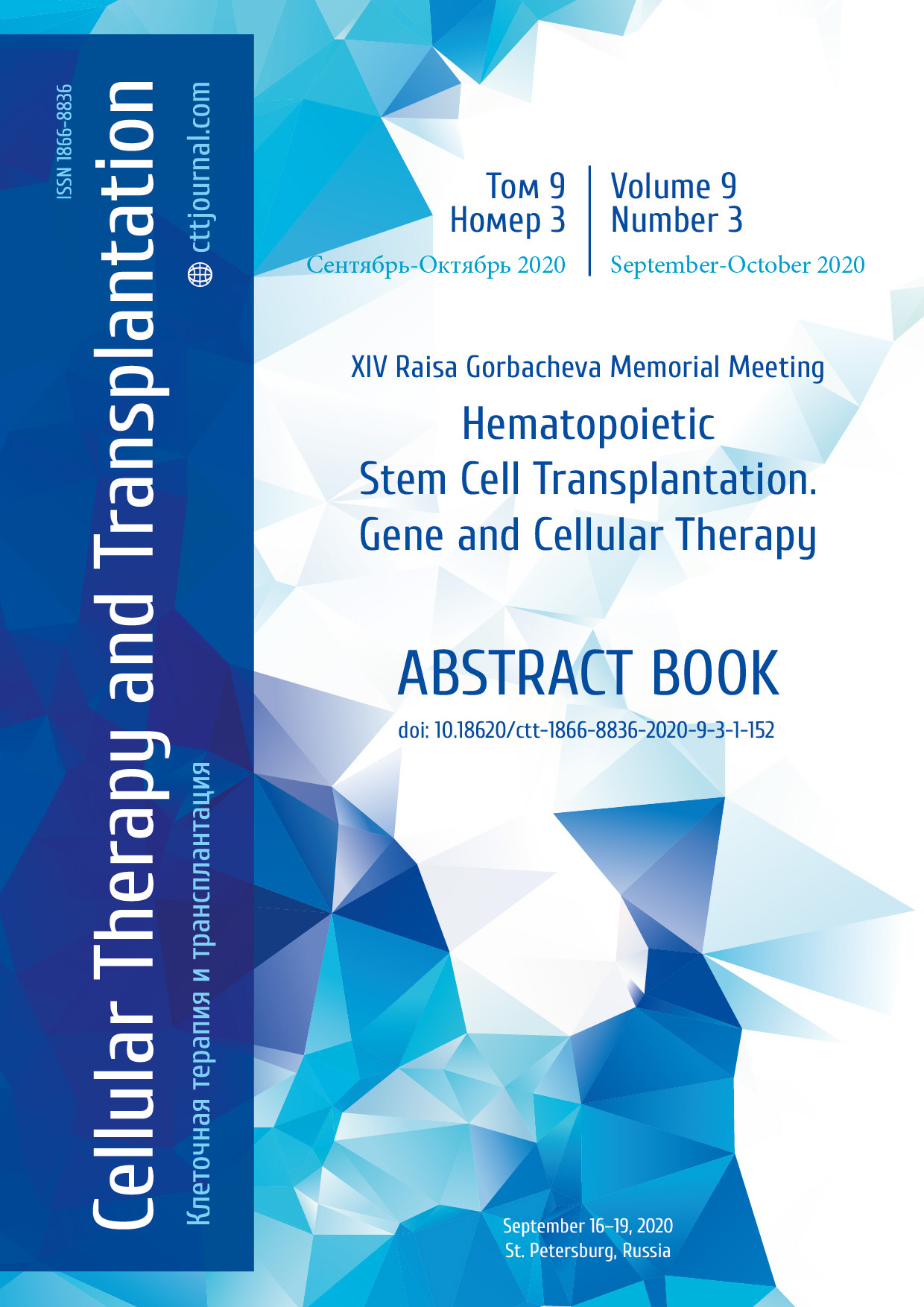LY-09. HLA-haploidentical hematopoietic cell transplantation in a patient with recurrent primary diffuse large B-cell lymphoma of the central nervous system
Evgeny E. Zvonkov, Daria A. Koroleva, Mikhail Yu. Drokov, Olga O. Shchetsova, Nelly G. Gabeeva, Svetlana Yu. Fedorova, Galina A. Yatsyk, Larisa A. Kuzmina, Elena N. Parovichnikova, Valery G. Savchenko
National Research Center for Hematology, Moscow, Russia
Contact: Evgeny E. Zvonkov, PhD, MD (Medicine), e-mail: dr.zvonkov@gmail.com
Summary
Introduction
The use of intensive induction chemotherapy followed by high-dose consolidation with auto-HCT for patients with PDLBCL of the central nervous system allows reaching up to 80% of the five-year disease-free and overall survival rates [A. Omuro et al. 2015]. The treatment options for relapses of PDLBCL CNS are limited and the prognosis is extremely poor. Although at present, allo-HSCT has been successfully developed for the treatment of refractory/recurrent patients with non-Hodgkin’s lymphomas, there is only little data on the effectiveness of its use in patients with PDLBCL CNS [T. Mika et al., E. Atilla et al]. Aim: To demonstrate our own experience of performing allo-HCT from a haploidentical related donor to a patient with recurrent PDLBCL CNS.
Clinical case
Patient R., 60 years old, in July 2019, was diagnosed PDLBCL CNS. At the onset of the disease, the development of left-sided hemiparesis and smoothing of the nasolabial fold on the left were noted. According to the MRI of the brain, a solid lesion of the right parietal region was revealed (Fig. 1). Histological and IHC study of tumor biopsy specimen revealed lymphoid infiltration by large cells with immunophenotypes CD45 +, CD20 +, CD79a +, BCL2 +, BCL6 +, MuM1 +. The patient underwent therapy according to the “CNS-2015” protocol, which included 4 courses of chemotherapy according to the R-MPV program (rituximab 375 mg/m2, methotrexate 3500 mg/m2, vincristine 2 mg, procarbazine 100 mg/m2), followed by transplantation of autologous hematopoietic stem cells (auto-HCT) in the TBC conditioning regimen (thiotepa 750 mg/m2, busulfan 8 mg/kg, cyclophosphamide 120 mg/kg). Complete remission was achieved (Fig. 2). 6 months after auto-HCT, an early relapse of PDLBCL CNS was diagnosed during examination according to the MRI of the brain (Fig. 3). The morphological verification failed. The use of etoposide with high doses of cytarabine, ibrutinib and lenalidomide allowed only a short-term effect and stabilization to be achieved. In March 2020, the patient underwent allo-HCT from a related haploidentical donor in the conditioning regimen of fludarabine 180 mg/m2 + busulfan 8 mg/kg. Immunosuppressive therapy was carried out according to the scheme cyclophosphamide 50 mg/kg on day +3 and 4, cyclosporine 3 mg/kg/day and mycophenolate mofetil 3 g/day from + 5 days. The times of white blood cell and platelet recovery were +25 and + 15 days, respectively. There were no serious infectious complications in the early post-transplant period. Examination a month later revealed 100% donor chimerism and complete remission of PDLBCL CNS (Fig. 4). After 1.5 months, the patient developed encephalopathy with severe cognitive impairment. According to MRI data, multifocal lesions of the white matter of the brain were revealed, which did not correspond to the MR characteristics in lymphoma, probably of toxic origin (Fig. 5). There was also no evidence for JC-associated progressive multifocal leukoencephalopathy. According to PCR data, the virus was not detected in the blood and cerebrospinal fluid. With further observation, an increase in the severity of changes in the substance of the brain was noted. At 3 months after allo-HCT, the patient died due to convulsive syndrome, which led to the development of coma and infectious complications.

Conclusion
Despite the unfavorable outcome in this patient, even in patients with PDLBCL CNS from the older age group (over 60 years old), allo-HCT from a haploidentical donor is possible and is associated with a good antitumor effect. In the future, expanding diagnostic capabilities and improving accompanying therapy will lead to more optimistic long-term results.
Keywords
Primary CNS lymphoma, allo-HSCT, haploidentical donor.
References
1. Omuro DD, Correa LM, DeAngelis CH, Moskowitz et al. R-MPV followed by high-dose chemotherapy with TBC and autologous stem-cell transplant for newly diagnosed primary CNS lymphoma. BLOOD, 26.02.2015; 125:9:1403-1410.
2. Mika T, Ladigan S, Baraniskin A et al. Allogeneic hematopoietic stem cell transplantation for primary central nervous system lymphoma. Haematologica. 2020 Apr; 105(4): e160-e163.


